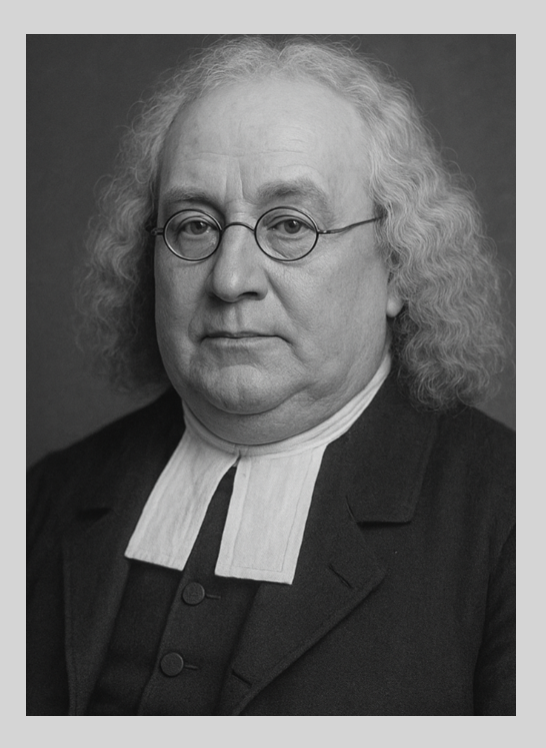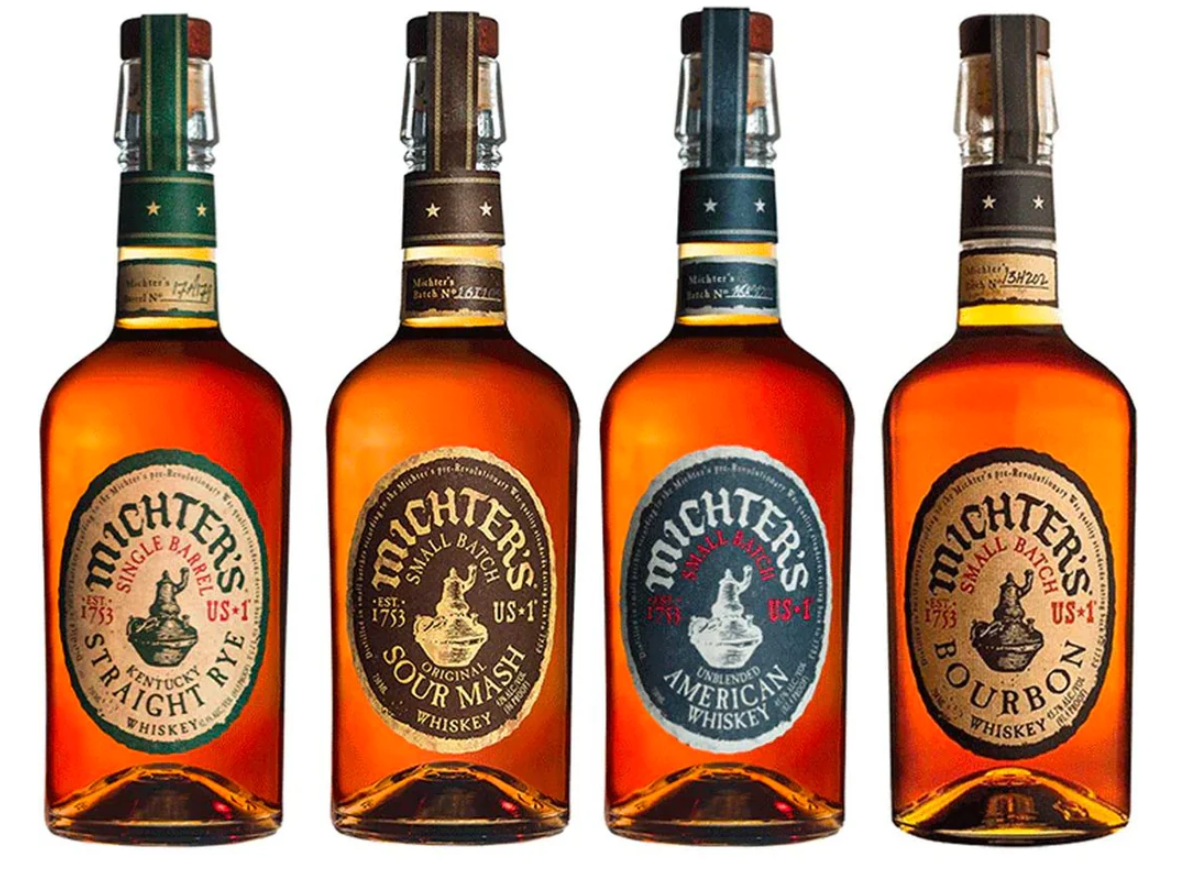Johann “John” Shenk
There are no actual photographs of Johann Shenk in existence. The above is an AI-generated image of Shenk based on facts known about his life.
Early American Whiskey Pioneer: Early Life and Immigration. Johann Shenk, also known as John Shenk, was born in 1696 in Switzerland, into a Mennonite family. The Shenk family was part of the Swiss Mennonite community known for their agricultural prowess and religious convictions. In the early 18th century, many Mennonites faced persecution in Europe, prompting migration to the American colonies, particularly Pennsylvania, where a certain religious tolerance existed. Johann and his family, including his brother, Michael, settled in the fertile region near Snitzel Creek in Schaefferstown, Lebanon County, Pennsylvania. This area, known as the Pennsylvania Blue Mountain Valley, was ideal for farming, and the Shenks quickly established themselves as farmers in this new land.
Little is documented about Shenk’s early life in Switzerland or his exact motivations for emigrating. Still, his Swiss Mennonite heritage suggests a life shaped by hard work, community values, and a deep connection to the land. By 1753, John Shenk, alongside his brother Michael, had established a foothold in Schaefferstown, a small but growing settlement. The Shenks’ agricultural background would prove instrumental in their later ventures into distilling, as surplus grain was a common resource for producing spirits in colonial America.
Founding of Shenk’s Distillery. In 1753, Shenk, with contributions from his brother Michael, founded a distillery near Snitzel Creek, marking the establishment of what would later become one of America’s oldest whiskey-producing operations. The distillery was built alongside a gristmill, a critical component for processing grain into flour and, importantly, for distilling. At the time, owning a still was not uncommon among Pennsylvania farmers, with as many as 3,000 private stills in the colony, primarily for personal consumption. However, the Shenks’ operation stood out due to its scale and ambition. John Shenk is credited as the primary founder, as Michael was only 13 years old at the time, making it likely that John, as the elder, made the key decisions regarding the distillery’s establishment and operations. Unfortunately, in about 1754, John died at the age of 58, leaving Michael in charge. Michael would go on to outlive his brother by nearly 50 years.
The distillery focused on producing rye whiskey, a natural choice given the abundance of rye grain in the region. Rye was a favored crop in Pennsylvania, and the Shenks’ whiskey quickly gained a reputation for quality. According to historical lore, during the Revolutionary War, General George Washington visited the distillery and purchased Shenk’s rye whiskey to supply his troops during the harsh winter at Valley Forge, earning the distillery the moniker “the whiskey that warmed the American Revolution.” While this story is celebrated in Michter’s modern branding, it remains part of local tradition and lacks definitive documentation, but it underscores the distillery’s early significance.
Life and Community Role. As a Swiss Mennonite, the Shenks’ lives were likely guided by the principles of simplicity, community, and stewardship. Mennonite farmers were known for their cooperative efforts, and Shenk’s distillery would have served as a hub for local agriculture, converting surplus grain into a valuable commodity. His role as a distiller placed him at the heart of Schaefferstown’s economy, as whiskey was not only a beverage but also a form of currency in colonial America, used for bartering and trade.
John Shenk’s personal life is not very well documented, but he was part of a tight-knit family. Michael, of course, played a supporting role in the distillery, which remained in the family for generations. In 1827, the distillery was passed to Michael Shenk’s son-in-law, Rudolph Meyer III, indicating the family’s continued influence. Shenk’s contributions extended beyond distilling, as his gristmill and distillery supported the local community by providing jobs and processing grain for other farmers.
Legacy and Evolution of the Distillery. John Shenk’s distillery laid the foundation for a legacy that endured for over two centuries. In 1860, the distillery was sold to Abraham Bomberger, whose mother was a Shenk, keeping it within the extended family. Bomberger expanded the operation, transforming it from a small agricultural still into a commercial distillery. The distillery was renamed Bomberger’s in the 1800s and later became Michter’s Distillery in the mid-20th century, when owner Lou Forman coined the name by combining parts of his sons’ names, Michael and Peter.
The distillery faced challenges, particularly during Prohibition (1919–1933), which forced it to halt public production. After Prohibition’s repeal, it changed hands multiple times, struggling financially. By 1989, the American whiskey industry’s downturn led to bankruptcy, and the Schaefferstown facility was abandoned. However, the Michter’s name and legacy were revived in the 1990s by Joseph J. Magliocco and others, who relocated production to Kentucky. Today, Michter’s Distillery honors John Shenk through its Legacy Series, particularly with Shenk’s Homestead Sour Mash Whiskey, a small-batch rye-heavy whiskey released annually since 2018. The 2024 release, for example, incorporates rye, malted rye, and caramel malt, aged in French oak from the Vosges region, showcasing innovation while paying homage to Shenk’s pioneering spirit.
Impact and Historical Significance.
John Shenk’s legacy is rooted in his role as a founding figure in American whiskey production. His distillery, established in 1753, is recognized as one of the earliest in the United States, predating many iconic distilleries. The Shenk’s Homestead brand, part of Michter’s Legacy Series, continues to celebrate his contribution by using the traditional sour mash process, where a portion of previously distilled mash is added to the next batch to ensure flavor consistency. This technique, combined with modern innovations like unique barrel aging, reflects Shenk’s influence on both historical and contemporary whiskey-making. Michter’s also includes Bomberger’s Straight Bourbon Whiskey in their Michter’s Legacy Series.
The distillery’s history also highlights the resilience of American whiskey through turbulent times, from the Revolutionary War to Prohibition and industry downturns. While the original Schaefferstown site is no longer operational, its legacy lives on in Kentucky, where Michter’s produces award-winning whiskeys. Shenk’s story is a testament to the ingenuity of early American immigrants, whose agricultural and distilling skills shaped the nation’s cultural and economic landscape. His name remains synonymous with quality and tradition in the whiskey world, ensuring that John Shenk’s contributions are remembered by enthusiasts and historians alike.
Contributed by: Mike Petrarca, Charlestown, West Virginia






